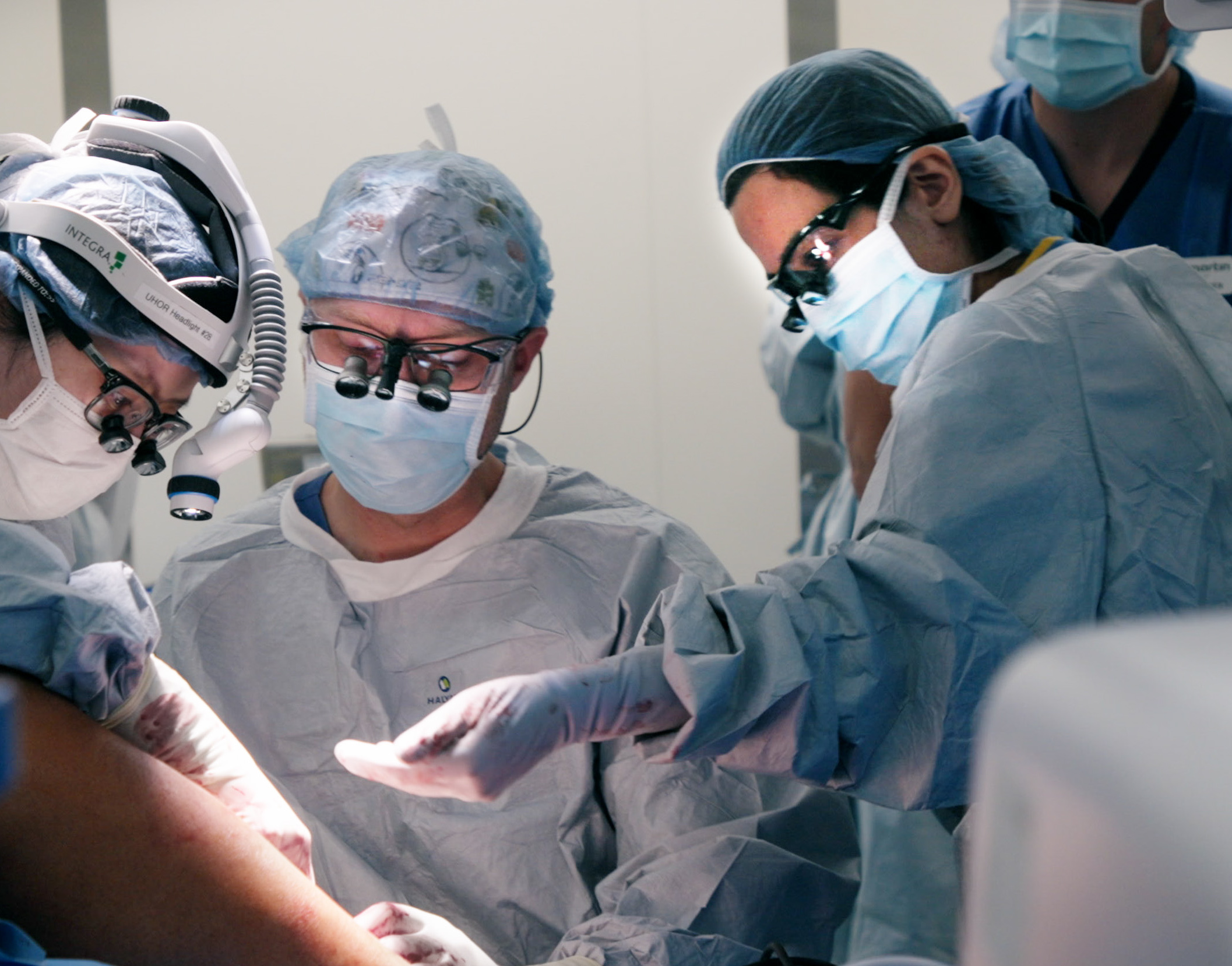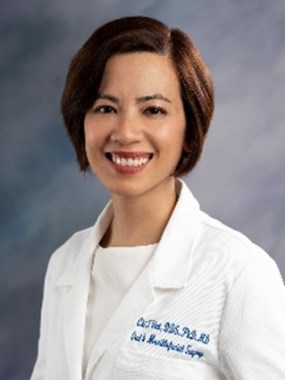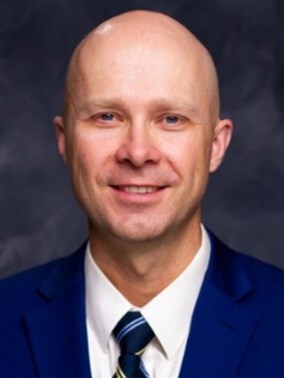
Oral cancer survival has not improved over the past several decades. Oral cancer patients suffer from significant disfigurement1 and a 5-year death rate of 40%,2 accounting for approximately one death per hour.2 These discouraging statistics are in part due to lack of funding and focused research efforts to develop effective therapies for oral cancer. In contrast, many other cancers have seen improved survival with adequate funding to fuel treatment advances. In the absence of novel effective therapies for oral cancer, a patient’s best chance of survival lies in early detection. Oral cancer often escapes early detection; to make matters worse, the epidemiology of oral cancer is shifting. Many new cases are in young patients under the age of 45 who do not smoke tobacco or drink alcohol3 and, therefore, would never suspect cancer in themselves.
Racial and socioeconomic disparities are major drivers of poor outcomes in oral cancer patients. Black patients are much more likely to die because of a later stage at diagnosis and lack of health insurance.4 While we know that routine dental visits improve oral cancer survival by allowing for early detection,5 patients with socioeconomic hardship cannot afford regular dental care, further worsening disparities in outcome.
The patients who undergo surgery, radiation and chemotherapy and actually survive their oral cancer diagnosis will experience major differences in functional outcomes, depending on their socioeconomic status. Tooth loss from either tooth decay after radiation, or as a result of being removed with the jaw during cancer surgery, causes major restrictions in a patient’s ability to eat, drink, speak and interact in social settings. Even so, one study shows that only about 2.3% of patients6 actually ever have these teeth replaced, with high cost being the most common reason for lack of full dental reconstruction. Unfortunately, comprehensive reconstruction for oral cancer patients who have their jaw and teeth removed due to cancer exists in no man’s land between medical and dental coverage, with both often refusing to pay. The high out-of-pocket expenses can put cancer patients in major debt. This scenario is in stark contrast to breast cancer treatment—in 1998, Congress passed the Women’s Health and Cancer Rights Act (WHCRA), which mandated that insurances cover breast reconstruction after mastectomies. Prior to this, breast reconstruction after cancer surgery had been seen as a purely cosmetic procedure. The change was driven in part by a surgeon who helped his patients in private by reducing the cost of the breast reconstruction procedure and in public advocated with Congress for a change in policy—a story that was highlighted in the Wall Street Journal.8
At Loma Linda University Medical Center, we have developed a workflow to perform cancer removal and jaw reconstruction with microvascular free flaps, dental implant and dental prosthesis placement. This surgical technique, named “jaw in a day,” was developed over one decade ago7 but has only recently been routinely adapted by a handful of hospitals to efficiently reconstruct oral cancer patients. (Please see the recent PBS Life on the Line episode featuring a patient who underwent this surgery: https://www.pbs.org/video/keep-moving-forward-ftyxwn/.) While this technique undoubtedly improves outcomes in patients who are the right candidates for the surgery, the change can only be felt locally in San Bernardino County. However, as in the case of breast cancer reconstruction, major policy change can take effect if surgeons and clinicians continue to advocate for oral cancer patients, particularly those with significant disparities.
Co-Author Bios:

Chi T. Viet, DDS, MD, PhD, FACS
Dr. Chi Viet is a surgeon scientist focused on head and neck cancer management. She serves as an Associate Professor of Oral Maxillofacial Surgery at Loma Linda University. Her extensive research experience and interests include head and neck carcinogenesis, neurobiological basis of symptoms faced by head and neck cancer patients, and epigenetic biomarkers of head and neck cancer. She enjoys gardening, cooking, and traveling with her husband and daughter.

Paul Walker, MD, FACS
Dr. Paul Walker is Associate Professor of Otolaryngology Head and Neck surgery at Loma Linda University. He is a fellow of the American Head and Neck Society and Fellow of the American College of Surgeons. He also serves as assistant residency program director and has seen the residency program expand from 12 residents to 20 residents. Dr. Walker’s clinical interest lies in head and neck cancer and reconstruction of the most complex patients. He enjoys spending time with his wife and 3 boys and enjoying cycling, competing in half ironman triathlons, camping and hiking.
References
- Dhanuthai K, Rojanawatsirivej S, Thosaporn W, Kintarak S, Subarnbhesaj A, Darling M, Kryshtalskyj E, Chiang CP, Shin HI, Choi SY, Lee SS, Aminishakib P. Oral cancer: A multicenter study. Med Oral Patol Oral Cir Bucal. Jan 1 2018;23(1):e23-e29. doi:10.4317/medoral.21999
- Yoon AJ, Wang S, Kutler DI, Carvajal RD, Philipone E, Wang T, Peters SM, LaRoche D, Hernandez BY, McDowell BD, Stewart CR, Momen-Heravi F, Santella RM. MicroRNA-based risk scoring system to identify early-stage oral squamous cell carcinoma patients at high-risk for cancer-specific mortality. Head Neck. Aug 2020;42(8):1699-1712. doi:10.1002/hed.26089
- Ng JH, Iyer NG, Tan MH, Edgren G. Changing epidemiology of oral squamous cell carcinoma of the tongue: A global study. Head Neck. Feb 2017;39(2):297-304. doi:10.1002/hed.24589
- Yu AJ, Choi JS, Swanson MS, Kokot NC, Brown TN, Yan G, Sinha UK. Association of Race/Ethnicity, Stage, and Survival in Oral Cavity Squamous Cell Carcinoma: A SEER Study. OTO Open. Oct-Dec 2019;3(4):2473974X19891126. doi:10.1177/2473974X19891126
- Farquhar DR, Divaris K, Mazul AL, Weissler MC, Zevallos JP, Olshan AF. Poor oral health affects survival in head and neck cancer. Oral Oncol. Oct 2017;73:111-117. doi:10.1016/j.oraloncology.2017.08.009
- Virgin FW, Iseli TA, Iseli CE, Sunde J, Carroll WR, Magnuson JS, Rosenthal E. Functional outcomes of fibula and osteocutaneous forearm free flap reconstruction for segmental mandibular defects. Laryngoscope. 2010;120 Suppl 4:S190. doi:10.1002/lary.21654
- Levine JP, Bae JS, Soares M, Brecht LE, Saadeh PB, Ceradini DJ, Hirsch DL. Jaw in a day: total maxillofacial reconstruction using digital technology. Plast Reconstr Surg. Jun 2013;131(6):1386-1391. doi:10.1097/PRS.0b013e31828bd8d0
- Jeffrey NA. Is it corrective or cosmetic? Plastic surgery stirs a debate. Wall Street J. 1998; https://www.wsj.com/articles/SB898729966633093500
